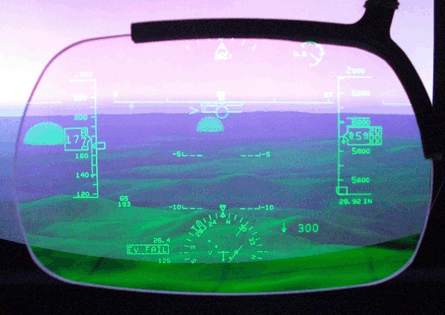Rockwell Collins says recent flight tests with the Pro Line Fusion avionics on a Bombardier Global 5000 reveal that a combination of synthetic vision on a head-up display increased instrument landing system tracking accuracy by 70% laterally and 25% vertically compared with guidance from traditional head-down gauges.
The company is in the process of certificating the Fusion-based Global Vision cockpit for Bombardier's Global 5000 and Global Express XRS business jet, both of which will include synthetic vision on the Rockwell Collins head-up guidance system.
The company notes that pilots using head-down synthetic vision also "showed improvement" when flying instrument approaches compared with traditional head-down means.
 |
|---|
© Rockwell Collins |
The tests are a key part of the strategy to gain "operational credit" for lower-landing minima during special authorisation category I ILS and GPS-based WAAS LPV (wide area augmentation system localiser performance with vertical guidance) approaches from the Federal Aviation Administration. Category 1 approaches, the most numerous of ground-based instrument approaches worldwide, typically have a 200ft (61m) minimum descent altitude below which pilots must see the runway environment with their natural vision. WAAS LPV approaches use only augmented GPS for guidance to the runway.
"Our ultimate goal is to achieve operational credit for lower-landing minima down to 100ft, which will result in less re-routeing of flights at hundreds of airports when visibility is low," says Greg Irmen, vice-president and general manager for Rockwell Collins business and regional systems. "While more testing is needed, these initial findings support our philosophy that head-up, eyes-out is the preferred way to fly and the best approach for achieving our objective."
Rockwell Collins co-chairs a committee at standards body the RTCA that is developing minimum system performance requirements needed to allow synthetic vision approaches down to 150ft minimums for category 1 instrument approaches initially, to be followed later by reduced landing minima for WAAS LPV approaches. The company says it will use its MultiScan weather radar to cross-check Fusion's vertical guidance above the runway to achieve lower landing minima for WAAS LPV approaches.
The FAA must accept the RTCA recommendation and change a variety of documents before the practices can be used.
"It is not a matter of if technology will help pilots reach lower decision heights when landing, it's a matter of when," says Irmen.
Rockwell Collins and Bombardier plan to certificate the synthetic vision for the Global Vision flight deck later this year, but the feature will initially only be available for increased situational awareness, until new synthetic vision-augmented approach minima are finalised by the FAA.
Source: Flight International























